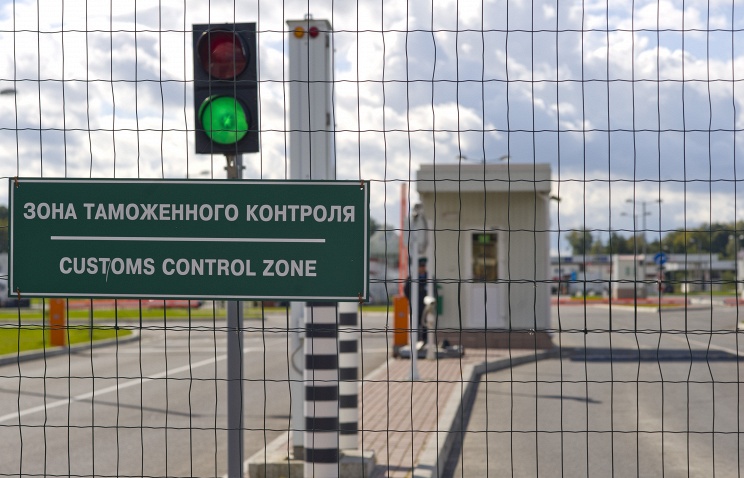With Russia and Turkey further drifting apart, an opportunity has emerged for Iranian businesses to fill in the space left vacant by Turkish traders and meet Russia’s various demands.
Over four months have passed since tensions escalated between Ankara and Moscow over Turkey’s downing of a Russian fighter jet and the severance of trade ties between the two countries.
After the November 24 incident, Russia imposed a series of sanctions on Turkey, including restrictions on Turkish economic entities operating in Russian territory and bans on deliveries of products, including foods, labor and services. This is while Russia was the largest destination of Turkish exports and the countries were bound by plans for a new gas pipeline and strong trade in food and tourism.
Also in 2014, the European Union and a number of other governments around the world imposed diplomatic and economic sanctions against individuals, businesses and officials from Russia over the Russian military intervention in Ukraine. In retaliation, Russia responded with sanctions against a number of countries, including a total ban on food imports from the EU, the United States, Norway, Canada and Australia.
As for Iran, the depressed oil prices and the economy’s overreliance on oil revenues have forced the government to spur non-oil exports. This is while considering Turkey’s disappearance from the sizable Russian market, the stage is set for a hike in bilateral trade with the north Caspian neighbor.
Despite the favorable political ties and the geographical advantage, Iran has so far been unable to tap into the lucrative Russian market, with Iranian products accounting for only $194.3 million or 0.7% of Russia’s total agricultural and food imports in 2015, based on data from Russia’s Federal Customs Service.
Products included vegetables, fruits, dried fruits and nuts from Iran.
Furthermore, reports published by the World Bank in 2014 indicate that the agricultural sector’s share of Russia’s GDP was 4.17%, compared to the industry’s 35.8% and services’ 60%. Considering the sector’s minor role in the Russian economy and northern Iranian provinces’ proximity to the Caspian Sea and Russian borders, agricultural exports to Russia can be mutually beneficial. Iran-Russia trade amounts to $700-800 million per annum.
Green Corridor
Russia and Iran will sign an agreement in May on opening a “green corridor”, announced Russia’s Federal Customs Service Chief Andrei Belyaninov during a conference in Crimea on Thursday.
Iran will “replace the whole of Turkey in the deliveries of perishable goods to Russia”, said the Russian official.
The green corridor will ease customs procedures and help expedite a large number of formalities for customs clearance and document formalization, reported Russian news agency TASS.
Russian Energy Minister Alexander Novak, who is co-chairman of the Iran-Russia Economic Commission, said Iran could supply Russia with fruits and vegetables worth $1 billion on a yearly basis.
The Eurasian country intends to buy pistachio nuts, dates and grapes, among other agricultural products. Russian traders have also expressed readiness to increase purchases of food products from Iran and eventually replace the banned Turkish products.
The idea of green corridor, aimed at transporting Iranian agro-food products to Russia mainly through the Caspian Sea and the Republic of Dagestan, was first discussed by Russian Agriculture Minister Alexander Nikolayevich Tkachyov during his visit to Iran back in January.
Challenges Ahead
However, the Iranian traders’ path toward the remunerative Russian agriculture and food market is lined with various hurdles.
Weak marketing strategies and failure to identify the Russian market’s potential areas, lack of common health codes between the two countries, Iranian traders’ difficulties in acquiring Russian visas and the Russian consumers’ still-lingering inclination toward European products are some of the impediments to cashing in on the Russian market.
According to Donya-e-Eqtesad, Iran’s agricultural sector is still lagging behind its more modernized Turkish competitor it seeks to replace.
Turkey has almost twice the annual precipitation rate compared to Iran, uses efficient techniques of water management in the agriculture sector, produces at lower costs, is supported by the country’s export-oriented policies and the Turkish export-import bank.
In fact, Iran’s agricultural sector has big shoes to fill in the Russian market in terms of product quality, pricing and marketing prowess. This is while the depreciation of the Russian currency against the dollar has increased the risk of exports to the Eurasian country for Iranian traders, according to deputy head of Trade Promotion Organization of Iran, Mohammad Reza Modoudi.
“The unfavorable development has resulted in an unwillingness among traders to ship their products to the market,” he added.
In January, the ruble slumped to an all-time low as oil’s retreat choked the revenue of the world’s largest energy exporter. The currency weakened as much as 4.1% against the dollar, surpassing the previous record it touched at the peak of Russia’s financial market turmoil in December 2014.


